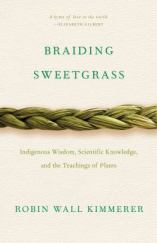 I live barely a block from Lake Michigan. I see it from my windows, and I can walk to its shore in minutes. When there, I sometimes join in spirit with the Potawatomi who must also have stood there, marveling at the pristine incoming waves.
I live barely a block from Lake Michigan. I see it from my windows, and I can walk to its shore in minutes. When there, I sometimes join in spirit with the Potawatomi who must also have stood there, marveling at the pristine incoming waves.
They did not know — as I do — that they evolved billions of years ago from creatures who originally lived in water, or that their bodies were over 70% water. But they had a very advanced reverence for, and unity with, water and all creation. How sad, how tragic, how foolish we were to reject their sense of the sacred and use Earth’s water and resources in ways that desecrate them, thus harming all lives, including our own!
 Every corner of this continent was originally Indian country. There are more than 565 federally-recognized tribes and hundreds of unrecognized tribes. Each tribe has its own culture, customs, traditional clothing, dwellings, and rituals. How would we feel if strangers forced us and our families to leave our homes so they could claim to have “found” this land — and too often spoil it? Why might Native Americans respond to Thanksgiving holidays with acts of rebellion and resistance?
Every corner of this continent was originally Indian country. There are more than 565 federally-recognized tribes and hundreds of unrecognized tribes. Each tribe has its own culture, customs, traditional clothing, dwellings, and rituals. How would we feel if strangers forced us and our families to leave our homes so they could claim to have “found” this land — and too often spoil it? Why might Native Americans respond to Thanksgiving holidays with acts of rebellion and resistance?
As we give thanks for our abundant gifts this Thanksgiving, let us also remember and value the example our indigenous ancestors left us. Let us remember the injustices done to them both in past centuries and also today. Let us do what we can to protect their sacred burial grounds and their human rights, and let us strive to reduce the pollution and wasteful use of water caused by industries and by ourselves (e.g., if we use bottled water or plastic straws).
In her gloriously inspiring book, Braiding Sweetgrass: Indigenous Wisdom, Scientific Knowledge, and the  Teachings of Plants, Robin Wall Kimmerer tells us that Native peoples globally send greetings and thanks to all members of the natural world each day. Here is one excerpt taken from the Haudenosaunees’ all-encompassing Thanksgiving Address:
Teachings of Plants, Robin Wall Kimmerer tells us that Native peoples globally send greetings and thanks to all members of the natural world each day. Here is one excerpt taken from the Haudenosaunees’ all-encompassing Thanksgiving Address:
We now turn our thought to the Creator, or Great Spirit, and send greetings and thanks for all the gifts of Creation. Everything we need to live a good life is here on Mother Earth. For all the love that is still around us, we gather our minds together as one and send our choicest words of greeting and thanks to the Creator. Now our minds are one. (p. 115)
Robin ends that chapter with this sobering thought:
Every day, with these words, the people give thanks to the land. In the silence that falls at the end of those words I listen, longing for the day when we can hear the land give thanks for the people in return. (p. 117)
May we speed that day!
Hi Terri, Thanks for this post. I love getting them. I’ve been writing poetry for a few years and after reading your post thought I’d share one I did in 2016 around the Dakota pipeline.
HOLY GRAIL, HOLY OIL How is it fitting that outsized oil pipes demoralize landscapes designated sacred by modern ancients, sites veneratedthrough eons of religious tradition? Overmillennia animals and plants metamorphosedinto black gold so to bepumped and consumed (in fewer thanseven generations) for thecomfort and commerce ofenergy-eating peoples. For didn’t God provide new frontiersto be exploited by cunning conquerors? For centuries the newly-settled have deemed the culture and spiritof Native Americans to be of no consequence, transcendent connectionbetween humans and the natural world primitive, irritatingly primordial. Joanne Kennedy FrazerThe Universe is primarily a communion of subjects, not a collection of objects.Thomas Berry
LikeLiked by 1 person
Thank you so much, Joanne, for your comment and especially for sharing your very moving poem. What a perfect addition to this blog, and I hope everyone will read them both! Right on! I look forward to reading all your poetry some day! Loving blessings!
LikeLike
So beautifully put, Terri. The mentality of the westward movement, driven by manifest destiny unfortunately lingers. I was born in Lakota Sioux Territory (Pipestone, MN) where the scared stone for making peacepipes has been quarried by Native Peoples for thousands of years and is still quarried to this day. Passing a sign of peace around our Thanksgiving tables may help us remember the wisdom of First Americans. Thank you for sharing your thoughtful insights.
LikeLiked by 1 person
I am truly grateful to you, Kathleen, for sharing such an appropriate addition to my blog! I didn’t even realize the peace pipe was made from stone! That mist give you a very immediate sense of the sacred! My ideal self calls every day….
LikeLike
Thanks, Teri. I often wonder about the tribes that lived right here
and give thanks that they were here.
Love
Mayr Jo Keane
LikeLiked by 1 person
Hope you’ve been to Chicago’s Native American Museum, Mary Jo. I guess we both feel close to them right here, all evicted so ruthlessly….
LikeLike
Thanks Terri for this awesome info!
LikeLiked by 1 person
Thanks for reading and commenting, Edwin!
LikeLike